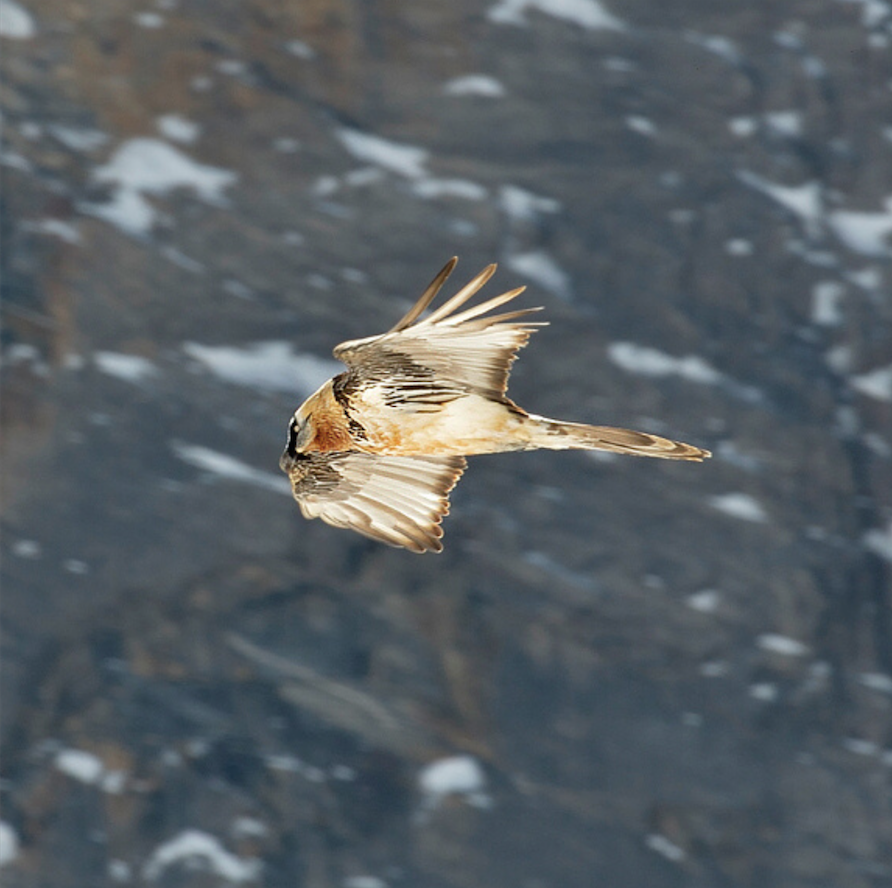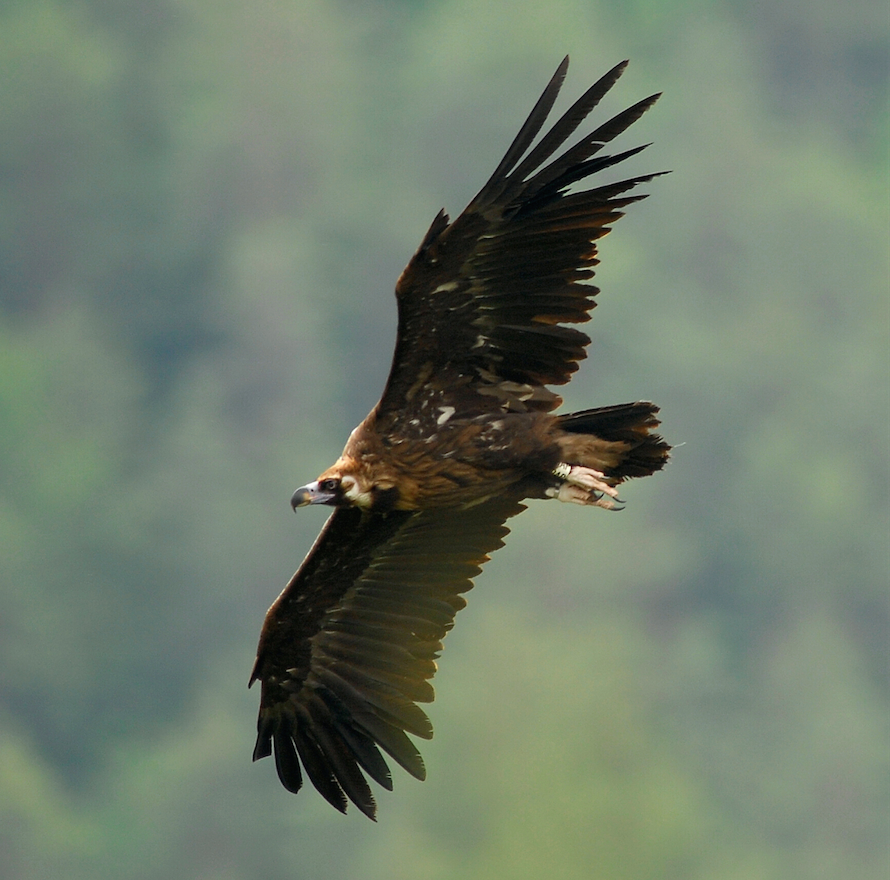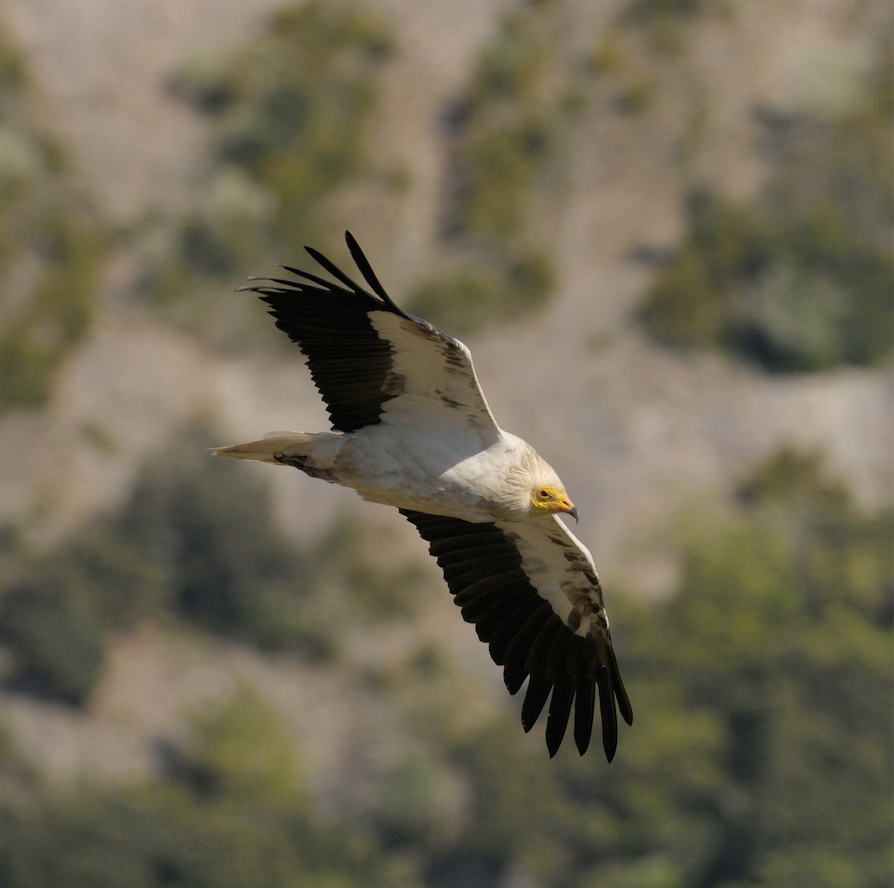
Project management meetings tend to be full of logistics and finance, but during the last LIFE GYPCONNECT steering committee meeting earlier this month, the staff from all the partner organisations took some time from their computers to go and observe a second breeding pair of Bearded Vultures in the border between the Aude and Ariège regions of the French pre-Pyrenees, in itself a demonstration that the project is working!
The LIFE GYPCONNECT project began in 2015 with the aim of connecting the breeding Bearded Vulture populations in Pyrenees and the one in the French massif central (being reintroduced), and ultimately with the Bearded Vulture in the Alps.
Attracting Bearded Vultures
The supplementrary feeding stations in the Aude region of the French eastern pre-Pyreenes (Photos by LPO Aude)
One of the project partners, LPO Aude, has been working in Aude in the eastern French pre-Pyreenes mountain ranges, the closest to the Massif Central, to promote the recolonisation of the area by birds. But how do you attract Bearded Vultures to a new area? Food! The team at LPO Aude have created a series of temporary feeding stations to attract birds from the population higher up in the Pyrenees. And the strategy has been paying off, as in the last few years they have started to nest in the area.
Roc Génese

In 2016 one breeding pair that made the area their new home successfully raised the first chick to hatch in Aude, Roc Génese. Just before fledging the nest our team along with the staff from LPO Aude managed to fit this wild-born bird with a GPS transmitter and over the last three years we have been monitoring his movements. This data is providing incredibly useful information that is helping to inform conservation actions to help the project achieve its aim of connecting up the populations of Bearded Vultures.
After fledging the nest Roc Génese spent the first two years roaming in the central Pyrenees, making a return to his fledging region briefly before heading back again to the High Pyrenees. After being spotted in Catalonia in February 2018 the bird has returned recently to the Aude region.
Since their first success the same breeding pair have not been as lucky, in 2017 they raised another chick, Flammadel, but unfortunately this young chick had some significant deformations and had to be taken from the nest, and is currently in the Bearded Vulture Specialised Breeding Centre in Vallcalent Spain, recovering from several operations. This pioneering pair failed to breed successfully in 2018, and unfortunately also failed in their breeding this year.
A second pair comes to the eastern Pre-Pyrenees
After the first pair established in the region they were joined two years ago by a second pair. In 2018 this pair failed in their first attempt to breed in their new home, but this year all is going well and we saw it feeding a large chick in the nest during the recent meeting!
Casseur d´os
Yves Roullaud from LPO Aude also showed us one of the supplementary feeding sites where he or an element of his team deposits a small amount of bones three times a month during the breeding season – a spectacular narrow ridge site overlooking a gorge. This site is frequently used by this breeding pair, and by some other local resident scavengers (see photos).
During the meeting the bird were also observed dropping bones in the preferred scree slope, confirming the Pyrenees name for this splendid species – casseur d´os!
If this pairs fledges the young, and according to the French supplementary feeding strategy, this site will be progressively discontinued, as supplementary feeding is only used in France to attract and fix pairs, and are then discontinued to secure wild foraging and thus a sustainable future.
Achieving GYPCONNECT
The news of another breeding in the area adds to the evidence that the project is beginning to achieve its aims of connecting populations of birds in the Pyrenees and the in the French Massif Central. Two of the young Bearded Vultures released in the Grands Causses have already done the trip to the Pyrenees, and we also know that a few young birds from the Alps have been observed in the Grands Causses, but to date no breeding adult from the Pyrenees has established itself in the French massif central, neither in the Alps. One bird released in Grands Causses, Basalte is currently part of a breeding trio in the Eastern most Alpine territory in the Malaval territory – the proof we want that the connection between populations is established. We will get there – it is only a matter of time!
LIFE GYPCONNECT

Led by the League pour la Protection des Oiseaux (LPO), the LIFE GypConnect project aims to establish a breeding population of Bearded Vultures in the Massif Central and Department of the Drôme. Releasing captive-bred Bearded Vultures into the wild at sites such as the Parc Naturel Régional des Grands Causses and Parc Naturel Régional des Baronnies Provençales will create a core population that will connect the two populations of the species in the Alps and Pyrenees. To facilitate movements between the new population and the Alpine and Pyrenean populations the LIFE GypConnect team is creating a network of supplementary feeding stations, and tackling threats such as poisoning, and collision and electrocution with the electricity infrastructure.
In 2018 three birds were released in the Baronnies, building on the release of eight birds in 2017, four in the Grands Causses, t
wo in the Baronnies and two in Vercors. This year at least 7 birds will be reintroduced in the Grands Causses and the Vercors. The project is co-funded by the EU LIFE fund and by the MAVA Fondation.








